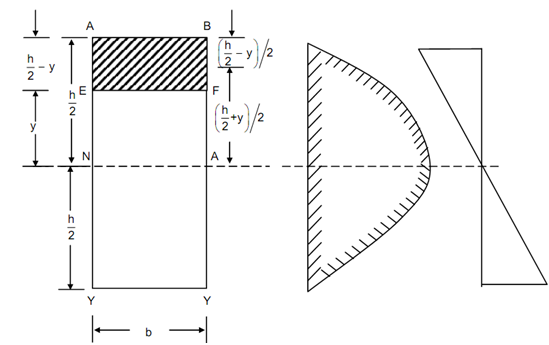State of Stress in Combined Bending and Shear:
As far we have been analysing the state of stress described by stress components sx, sy and txy. But we have not directed our attention as to how different stress components are induced & how they differ within the solid body & also how to recognize the critical locations. In this and in the next section, we will consider two specific types of loading and recognize the pattern of stresses induced in these cases.
You should have seen a big number of girders supporting bridges and yet a large number of beams supporting roof or floor slabs in buildings.
Let a beam of rectangular cross-section as illustrated in Figure. On any section of the beam there might be acting two types of reactive resistance, that is, a Bending Moment M & a Shearing Force Q. In terms of cross-sectional dimensions (breadth
'b' & height 'h') the stress components on a layer situated at a height 'y' from the neutral axis (centroidal axis here) are specified as follows :
sx = - 12 My /bd 3 --------------- (i)
sy = 0 -------------(ii)
txy = 1.5 Q / bh( 1 - (4y2 / h2 ) ------------(iii)
The variations of stresses across the depth as per Eqs. (i) & (iii) are illustrated in Given Figure

Figure